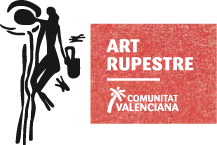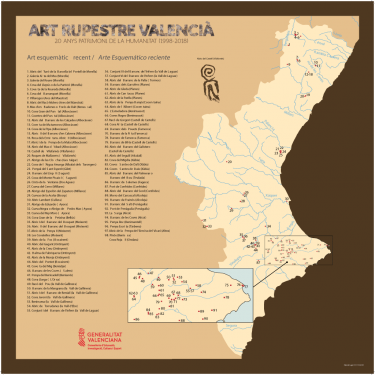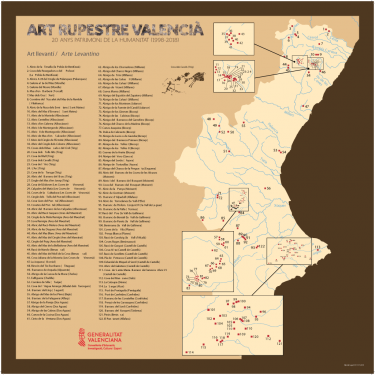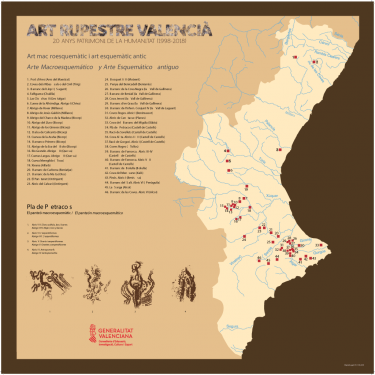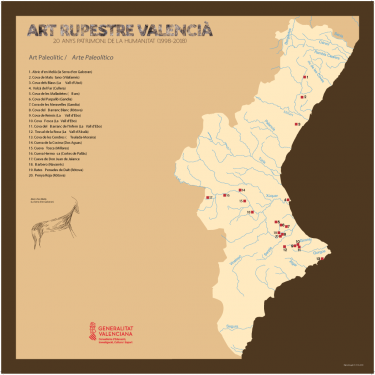Project
El arco Mediterráneo de la Península Ibérica contiene el corpus más grande de pinturas rupestres prehistóricas de toda Europa y constituye una imagen excepcional de la vida humana.
In 1998 UNESCO conceded World Heritage status to the Rock Art of the Mediterranean coast of the Iberian Peninsula, on the grounds that it constitutes “the largest body of pre-historic rock paintings in the whole of Europe”, and offers “a unique reflection of human life” (web UNESCO). The Valencian Community contributes to this body a large number of sites covering the different relevant artistic expressions (Palaeolithic Art, Levantine Art, Schematic Art and Macro-Schematic Art). A total of 351 sites are included in the UNESCO declaration, distributed between the three provinces as follows: Alicante 169, Castellon 101, and Valencia 81. When the new discoveries of recent years are incorporated, the number of sites rises to over 600.
The locations are widely spread across the Valencian territory. Specific concentrations can be observed to the north, in the Els Ports and l’Alt Maestrat districts within the mountainous terrain of the Iberian System; in the central region coinciding with the Massis del Caroig; and also in the south in the pre-Baetic mountains of the Alicantine districts of L’Alcoia-Comtat and La Marina Alta.
The Palaeolithic representations include various naturalist animal forms depicted by painting or engraving, shared out among a few sites distributed across the Valencian territory. All other Rock Art belongs to the Holocene period. The Levantine Art offers an important number of places which show very natural and dynamic scenes (largely related to hunting, but also of warfare or everyday life), featuring both humans and animals. The schematic examples (Schematic and Macro-Schematic Art) also reproduce, in this mode, both human and animal depictions, as well as a variety of abstract motifs (meanderings, zigzags…).
